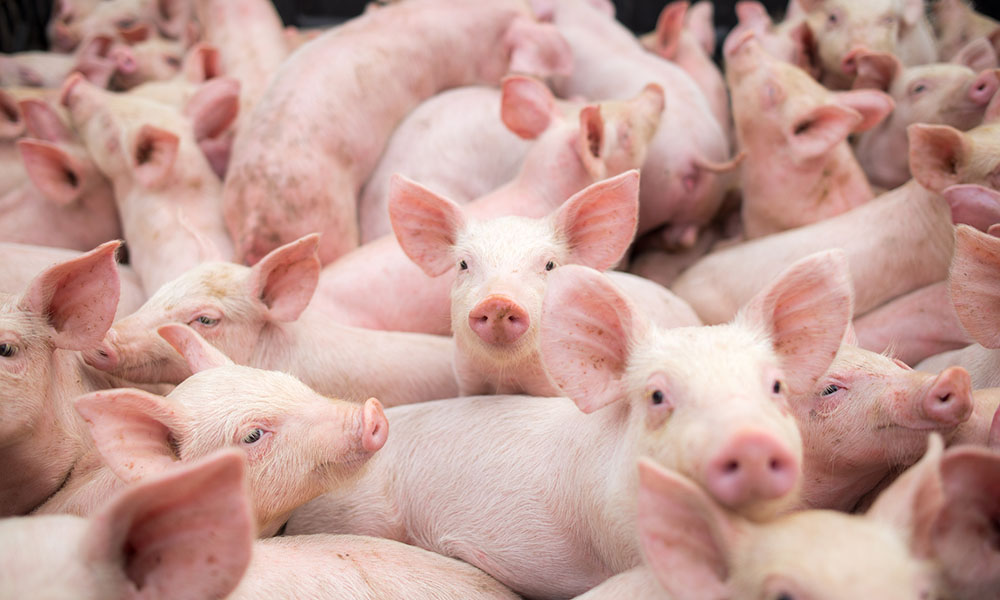Brazilian pig prices lose sustainability in the second half of August

Live pig prices managed to seek a good recovery movement in the Center-South of the country from the beginning of June to the first half of August with production adjustment measures, such as the reduction of the average weight of animals. Another positive point is that Brazilian exports have advanced in the last three months, both in terms of volume and revenue. The replacement between wholesale and retail showed strength between the end of July and the first half of August due to Father’s Day and the capitalization of households, which motivated the search for pigs by slaughterhouses to build stocks. It is worth mentioning that the spread between cost and price also recovered but remained poor throughout the period, as will be described below.
The dynamics of the Brazilian pork market changed during the second half of August, with demand slowing down at the final end. The slow flow of wholesale meat resulted in declines in carcass and loss of margin by industries. In addition to these factors, a negative environment was expected due to the situation of fattened cattle and their cuts, which declined sharply across the country. It is worth mentioning that beef is the first place in the preference of Brazilians, and given the situation described, by being a direct competitor, it ended up weighing. It was not only pork that was impacted, chicken also weakened in some states, as in São Paulo, which is even worse. In other words, there is a negative spiral at the moment, which must be reversed as soon as stocks shrink. On August 31, the average of a live kilogram in the Center-South of the country was BRL 6.02, down 7.4% from the closing of the first fortnight, when it reached BRL 6.52. In some states, the fall was more accentuated in the same period, such as Minas Gerais, where it fell by 12.5%; São Paulo, 9.7%; and Santa Catarina, 8.3%.
The decline in pig prices came at an unfavorable moment, considering that the main feedstuff inputs remain firm. Corn shows a certain situation of stress, with farmers decreasing offers. Thus, the natural tendency is for the deterioration of the pig farmers’ margins in the short term, which causes great apprehension among independent farmers, who are the ones that most feel this year’s crisis due to the lower capital and financial structure. The attached graph shows that the activity margins were recovering, however, the loss per head is high in all months of the year. The graph shows Santa Catarina as the largest national producer and exporter. During the first quarter, the average loss was between BRL 260/270 per head in Santa Catarina. Between July and August, this average dropped to BRL 115/130 per head and shows that the situation remains delicate and requires the continuity of adjustments in production.
For the last quarter of the year, both live pig and wholesale prices may present a new high, with industries and retail getting ready for the year-end festivities, when demand reaches its apex in the Brazilian market, however, the margins were hardly at levels that bring complete tranquility to pig farmers. It is the year of the World Cup, which can stimulate the search for cuts. Other factors that can help domestic consumption are: Auxílio Brasil cash aid, the arrival of Christmas and other bonuses in the economy. Exports also point to good results, with increased purchases from the Philippines, Thailand, Vietnam, Japan, and others. There is an expansion of destinations, which is excellent, considering that China has slowed down its purchases this year.
Read also
Wheat in Southern Brazil Impacted by Dry Weather and Frosts
Oilseed Industry. Leaders and Strategies in the Times of a Great Change
Black Sea & Danube Region: Oilseed and Vegoil Markets Within Ongoing Transfor...
Serbia. The drought will cause extremely high losses for farmers this year
2023/24 Safrinha Corn in Brazil 91% Harvested
Write to us
Our manager will contact you soon



